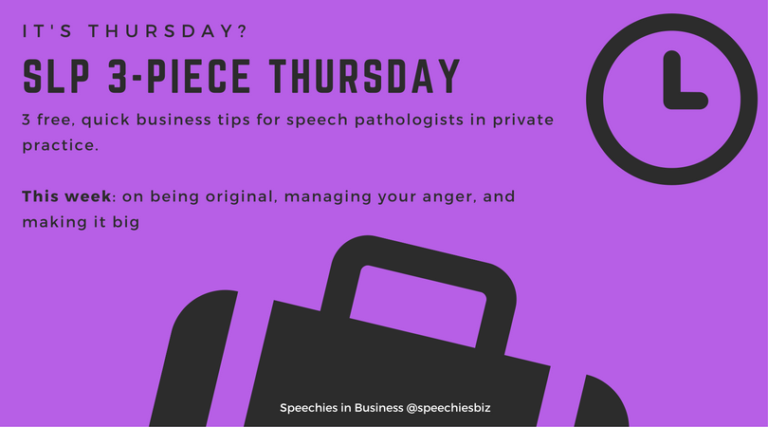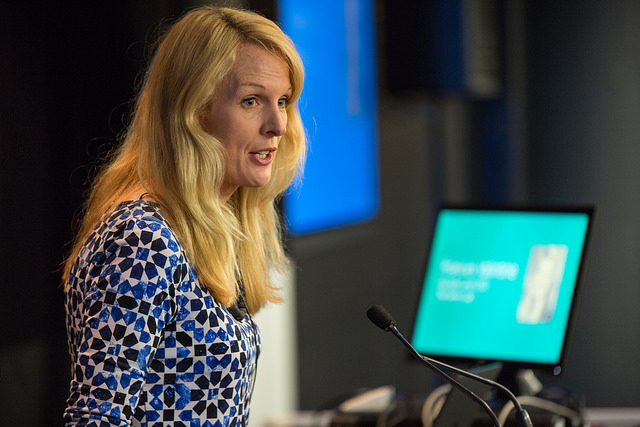“Nobody gets hurt.” SLP safety investments can improve your workplace and business
The big picture:
Safety at work is essential. But, too often, it’s looked at as a compliance issue, a constraint, or a cost.
Not just compliance:
Too often, managers talk about safety as rule enforcement, mandatory training, incident investigations, and root causes analyses. Safety should, instead, be considered an explicit part of your practice’s strategy that’s relevant to everyone at work, in every role, every day.
Why it matters:
Safety investments reduce health care costs. But, across different kinds of businesses, they have also been linked to increases in:
- client satisfaction;
- employee welfare;
- sales;
- margins;
- pricing power;
- market share; and
- long-term firm value.
Zoom in:
SLPs can priortise workplace safety in several ways:
- Talk to your team and, with feedback, define safety goals in concrete terms, e.g. zero workplace injuries.
- For SLPs, “safety” includes safety from infectious diseases and psychological safety.
- Agree on specific metrics linked to the real world outcomes you care about: e.g. eliminating trips and falls, reducing days lost to sick leave for infectious diseases or mental health issues.
- Customise safety training to your workplace. Make it specific to your key safety targets. Use real equipment and tools to demonstrate actual hazards around the workplace and how to mitigate them (e.g. around stairs, PPE fitting, or handwashing between clients).
- Make safety part of every team and supervision meeting.
- Track data using a simple spreadsheet or app.
- Replace broken and outdated equipment with safer models.
- Reward people for displaying preventative behaviours, e.g. randomly reward colleagues who are “caught being safe” (complying with PPE, handwashing, exercising safety procedures with stairs, etc., without being told).
- Encourage everyone to report incidents and near misses with a focus on improving systems (rather than laying blame).
- Build safety compliance and initiatives into bonus and other reward systems.
Bottom line:
Safety is not just a regulatory necessity and cost centre. It’s an opportunity to make things better for everyone at work, and can add value to your practice. Done right, a robust safety culture can give you a major strategic advantage.
Go deeper:
Safety Should Be a Performance Driver
Psychosocial hazards | Safe Work Australia
Read more:
See Professional Standard 1.3; Code of Ethics 1.2, 2.5; Code of Conduct for Unregistered Health Practitioners (NSW) 1, 2, 3, 4; NDIS Practice Standards 2.

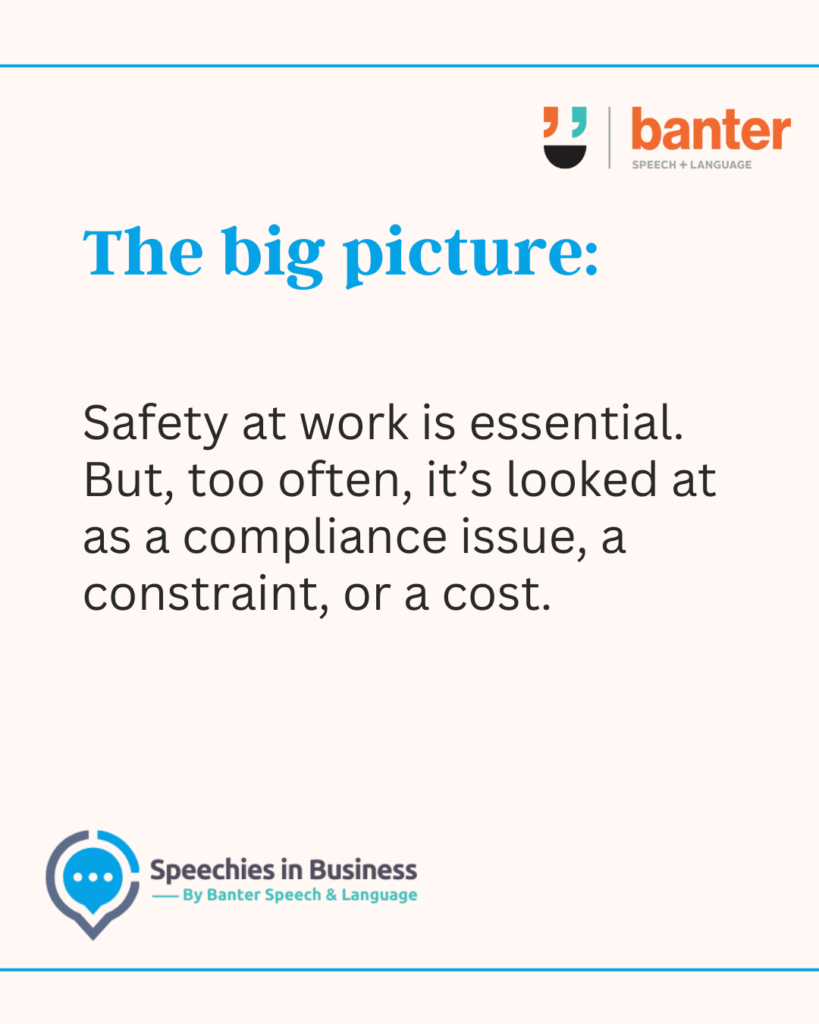
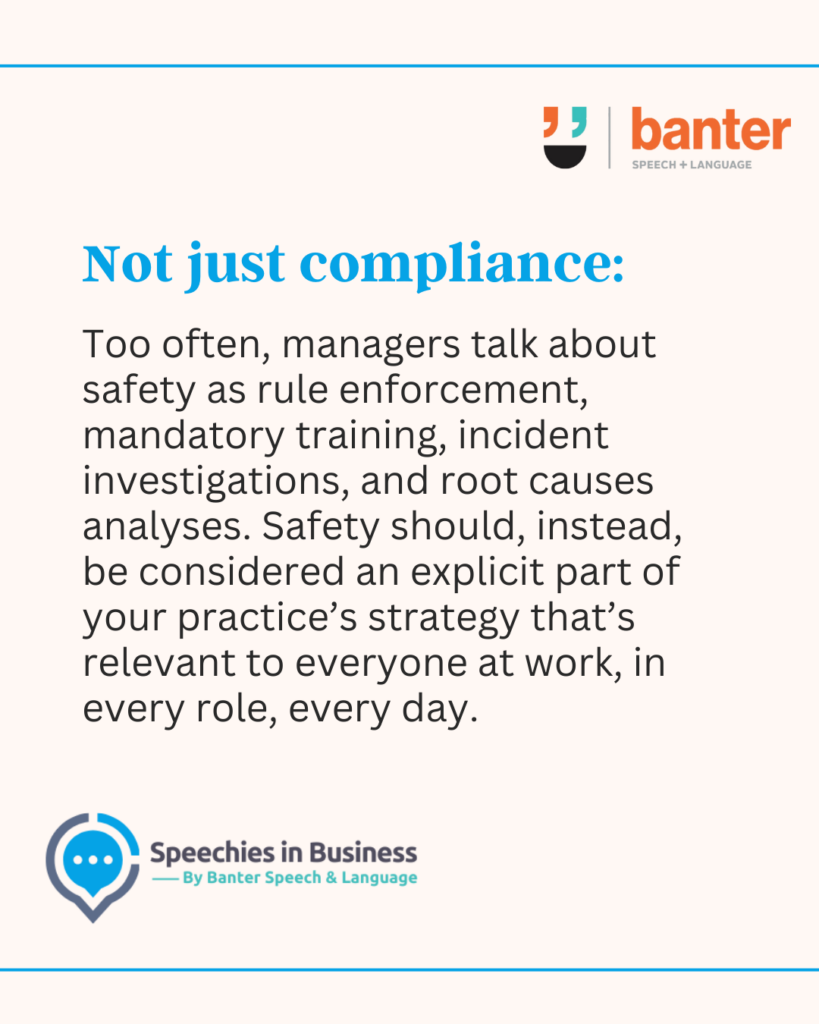
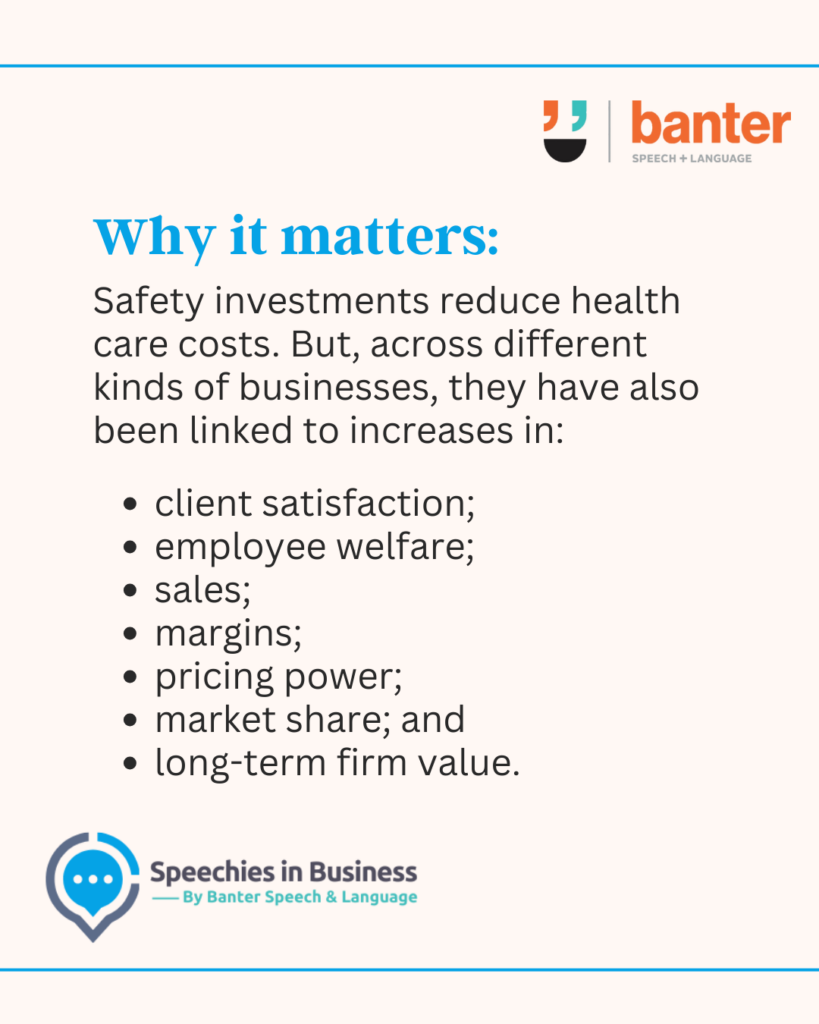
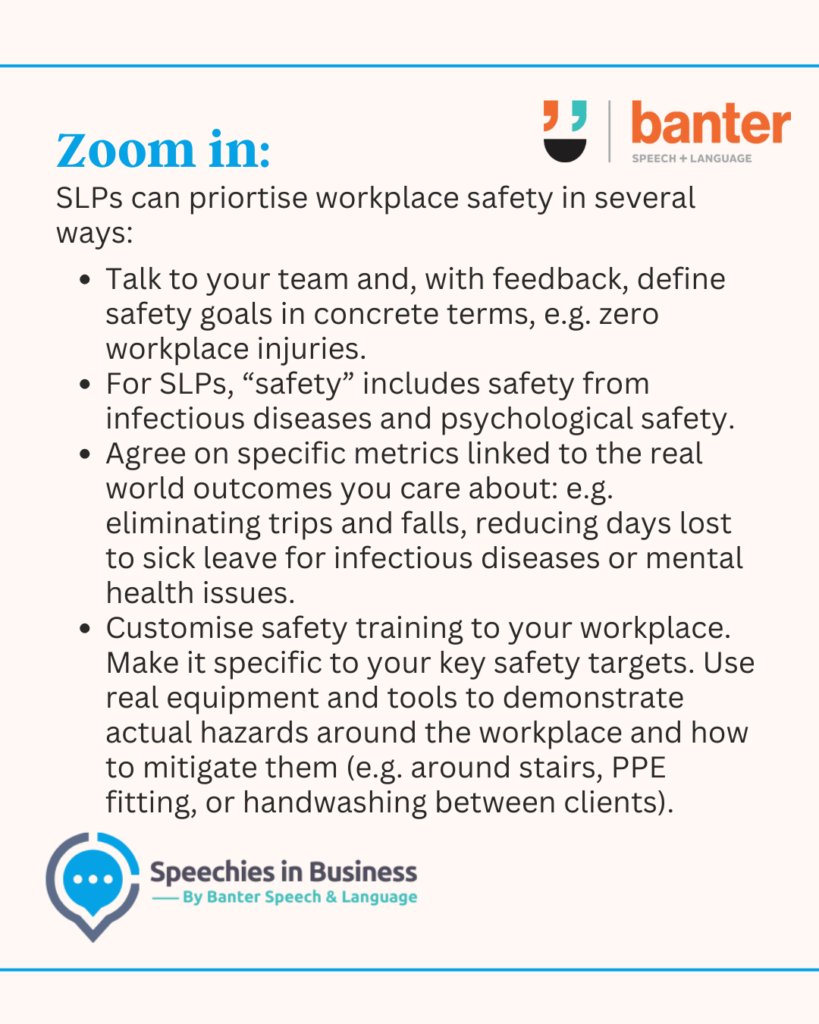
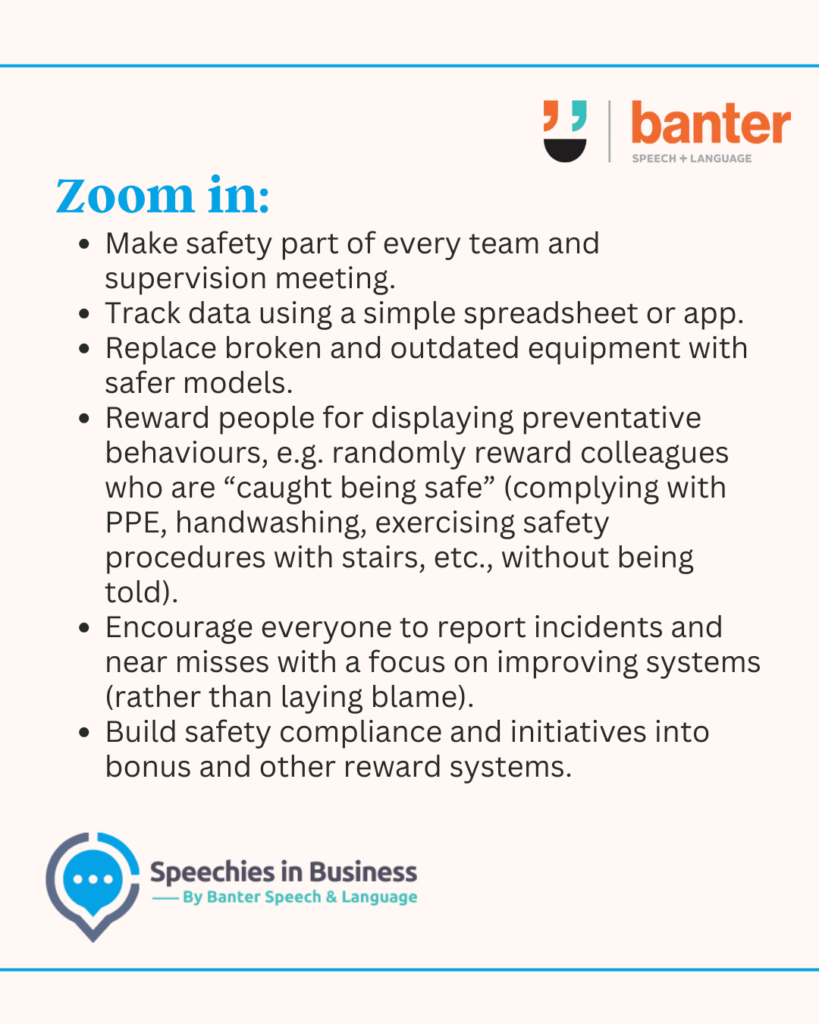
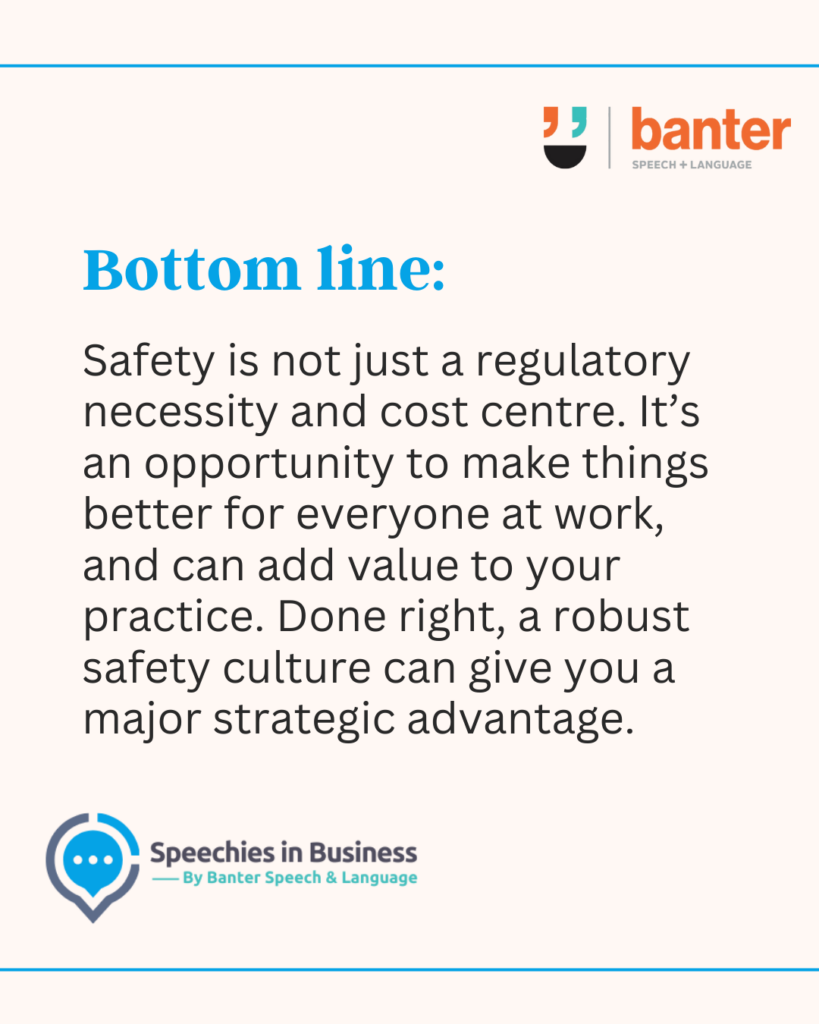
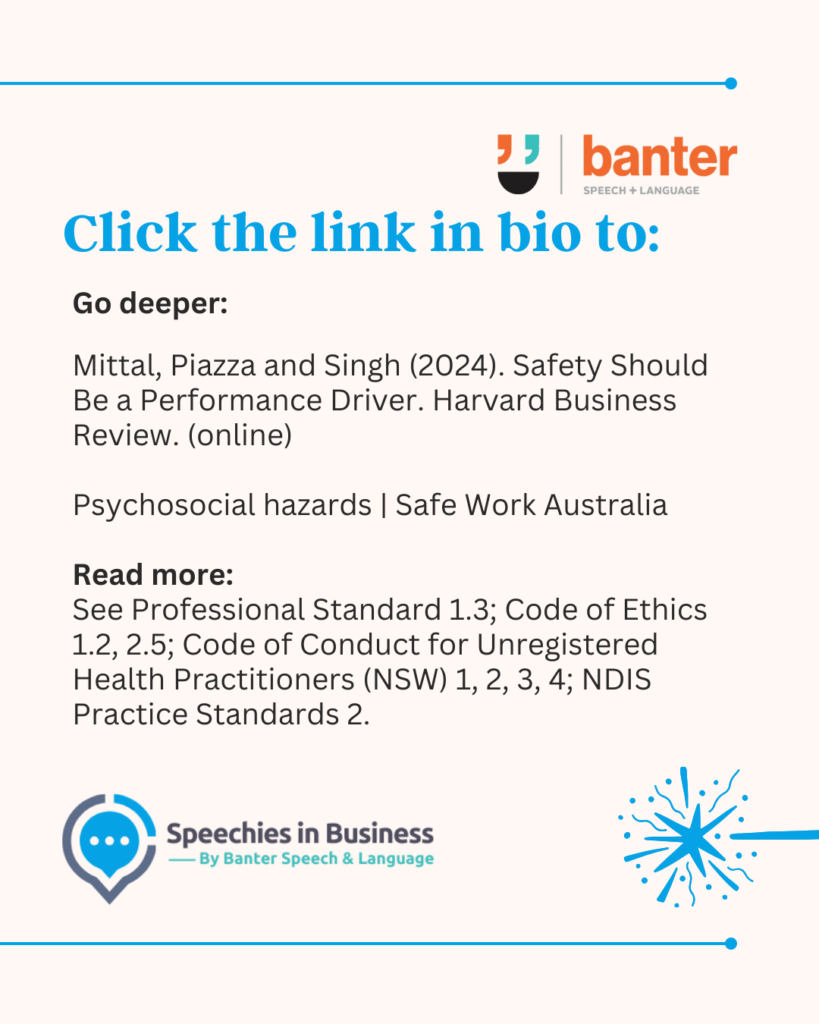
This article also appears in a recent issue of Banter Booster, our weekly round up of the best speech pathology ideas and practice tips for busy speech pathologists, speech pathology students and others.
Sign up to receive Banter Booster in your inbox each week:



